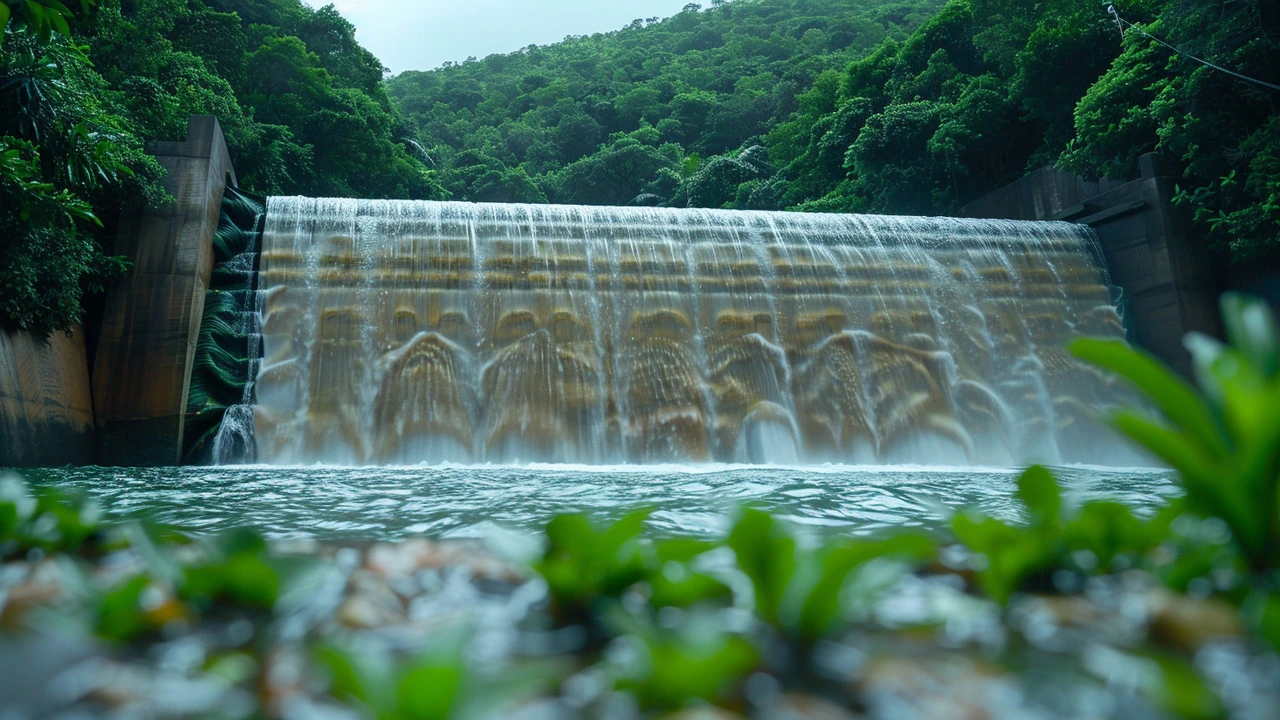KenGen's Strategic Expansion of Masinga Dam to Prevent Overflow Amid Heavy Rains
 May, 4 2024
May, 4 2024
Kenya's Preventive Measures against Dam Overflow
In a recent development, the Kenya Electricity Generating Company (KenGen) has announced a strategic plan to increase the height of the Masinga Dam by 1.5 meters. This decision comes as a direct response to the dramatically rising water levels in the dam’s catchment area, primarily driven by heavy seasonal rainfall. The Masinga Dam, which is a crucial component in Kenya's electricity supply, providing a substantial 36.5% of the nation’s peak power demand of 2,033 MW, reached a critical water level of 1,058.22 meters in May 2024, exceeding its maximum capacity of 1,058.13 meters.
The elevation of the dam is not just a technical adjustment; it is a necessary move to continue to safeguard both the electricity supply and communities living downstream. This article delves into the implications of this infrastructural change, the role of Masinga Dam in Kenya's hydroelectric system, and the broader impact on the local communities and environmental management.
Masinga Dam: An Engineering and Environmental Beacon
Masinga Dam is not only significant for its electrical output but also as a case study in integrated water resource management. Located in the larger context of the Seven Forks dams —which include Kamburu, Gitaru, Kindaruma, and Kiambere— Masinga's capacity extension is part of a collective strategy to manage the over 2.6 billion cubic meters of water these reservoirs handle. The strategic importance of these dams, especially during periods of heavy rainfall, cannot be overstated.
The current scenario was not unexpected. KenGen had forecasted higher water levels as early as November 2023 and had issued warnings to the communities residing near these water bodies. This proactive approach likely mitigated what could have been a severe crisis, highlighting the importance of advanced planning in hydroelectric power management and flood prevention. Now, further measures are being implemented to ensure the safety and functionality of these crucial infrastructures.
Balancing Hydroelectric Power and Environmental Safety
Growing environmental concerns and the evolving global climate pattern have made managing hydroelectric power sources more complex. The decision to raise the dam's height is a reflection of this balancing act between harnessing natural resources for energy and ensuring environmental and community safety. The modification is expected to enhance the dam’s capacity to manage surplus water efficiently, thereby preventing potential floods that could devastate nearby communities and ecosystems.
This expansion is especially crucial for Masinga because of its significant contribution to the national grid. As the largest of the Seven Forks dams, Masinga not only supports electricity generation but also acts as a critical buffer in managing the water levels for the other dams. Enhancing its capacity helps stabilize the entire chain of reservoirs under KenGen's management.
Impacts on Local Communities and Ecosystems
The decision to elevate the dam's structure entails more than just engineering. For the communities living in the vicinity of Masinga Dam and other reservoirs, there is a tangible impact on their habitats. Flooding, one of the primary concerns, can lead to displacement, loss of property, and even life. Thus, KenGen’s initiative to manage the water levels more effectively is a crucial intervention in community safety and well-being.
Moreover, the ecosystems surrounding these dams are delicate and require careful management to preserve biodiversity. The adjustments to the dam’s structure must be pursued with environmental diligence to prevent unintended consequences on the local flora and fauna. Continuous environmental monitoring and community engagement are essential components of this project to ensure that the ecological balance is maintained while meeting energy and safety needs.
Conclusion
The elevation of Masinga Dam is a calculated response to the challenges posed by natural elements and their impact on hydroelectric power generation. By increasing the dam’s height, KenGen not only ensures the operational safety of the dam but also protects the surrounding communities and ecosystems. As Kenya continues to harness its hydroelectric potential, such strategic infrastructural adjustments will be vital in managing both the resources and the risks associated with large-scale hydroelectric power generation.